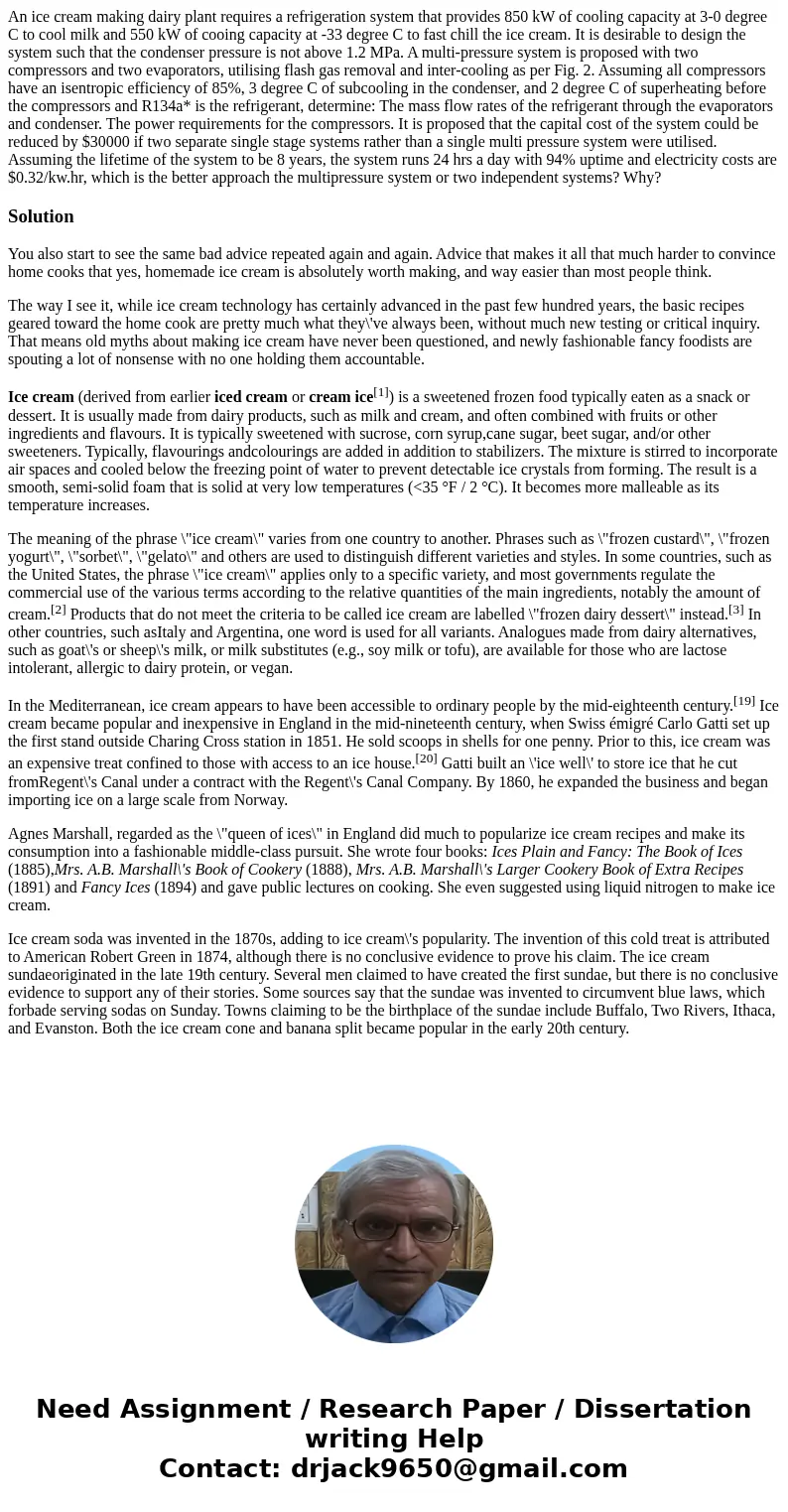An ice cream making dairy plant requires a refrigeration sys
Solution
You also start to see the same bad advice repeated again and again. Advice that makes it all that much harder to convince home cooks that yes, homemade ice cream is absolutely worth making, and way easier than most people think.
The way I see it, while ice cream technology has certainly advanced in the past few hundred years, the basic recipes geared toward the home cook are pretty much what they\'ve always been, without much new testing or critical inquiry. That means old myths about making ice cream have never been questioned, and newly fashionable fancy foodists are spouting a lot of nonsense with no one holding them accountable.
Ice cream (derived from earlier iced cream or cream ice[1]) is a sweetened frozen food typically eaten as a snack or dessert. It is usually made from dairy products, such as milk and cream, and often combined with fruits or other ingredients and flavours. It is typically sweetened with sucrose, corn syrup,cane sugar, beet sugar, and/or other sweeteners. Typically, flavourings andcolourings are added in addition to stabilizers. The mixture is stirred to incorporate air spaces and cooled below the freezing point of water to prevent detectable ice crystals from forming. The result is a smooth, semi-solid foam that is solid at very low temperatures (<35 °F / 2 °C). It becomes more malleable as its temperature increases.
The meaning of the phrase \"ice cream\" varies from one country to another. Phrases such as \"frozen custard\", \"frozen yogurt\", \"sorbet\", \"gelato\" and others are used to distinguish different varieties and styles. In some countries, such as the United States, the phrase \"ice cream\" applies only to a specific variety, and most governments regulate the commercial use of the various terms according to the relative quantities of the main ingredients, notably the amount of cream.[2] Products that do not meet the criteria to be called ice cream are labelled \"frozen dairy dessert\" instead.[3] In other countries, such asItaly and Argentina, one word is used for all variants. Analogues made from dairy alternatives, such as goat\'s or sheep\'s milk, or milk substitutes (e.g., soy milk or tofu), are available for those who are lactose intolerant, allergic to dairy protein, or vegan.
In the Mediterranean, ice cream appears to have been accessible to ordinary people by the mid-eighteenth century.[19] Ice cream became popular and inexpensive in England in the mid-nineteenth century, when Swiss émigré Carlo Gatti set up the first stand outside Charing Cross station in 1851. He sold scoops in shells for one penny. Prior to this, ice cream was an expensive treat confined to those with access to an ice house.[20] Gatti built an \'ice well\' to store ice that he cut fromRegent\'s Canal under a contract with the Regent\'s Canal Company. By 1860, he expanded the business and began importing ice on a large scale from Norway.
Agnes Marshall, regarded as the \"queen of ices\" in England did much to popularize ice cream recipes and make its consumption into a fashionable middle-class pursuit. She wrote four books: Ices Plain and Fancy: The Book of Ices (1885),Mrs. A.B. Marshall\'s Book of Cookery (1888), Mrs. A.B. Marshall\'s Larger Cookery Book of Extra Recipes (1891) and Fancy Ices (1894) and gave public lectures on cooking. She even suggested using liquid nitrogen to make ice cream.
Ice cream soda was invented in the 1870s, adding to ice cream\'s popularity. The invention of this cold treat is attributed to American Robert Green in 1874, although there is no conclusive evidence to prove his claim. The ice cream sundaeoriginated in the late 19th century. Several men claimed to have created the first sundae, but there is no conclusive evidence to support any of their stories. Some sources say that the sundae was invented to circumvent blue laws, which forbade serving sodas on Sunday. Towns claiming to be the birthplace of the sundae include Buffalo, Two Rivers, Ithaca, and Evanston. Both the ice cream cone and banana split became popular in the early 20th century.

 Homework Sourse
Homework Sourse